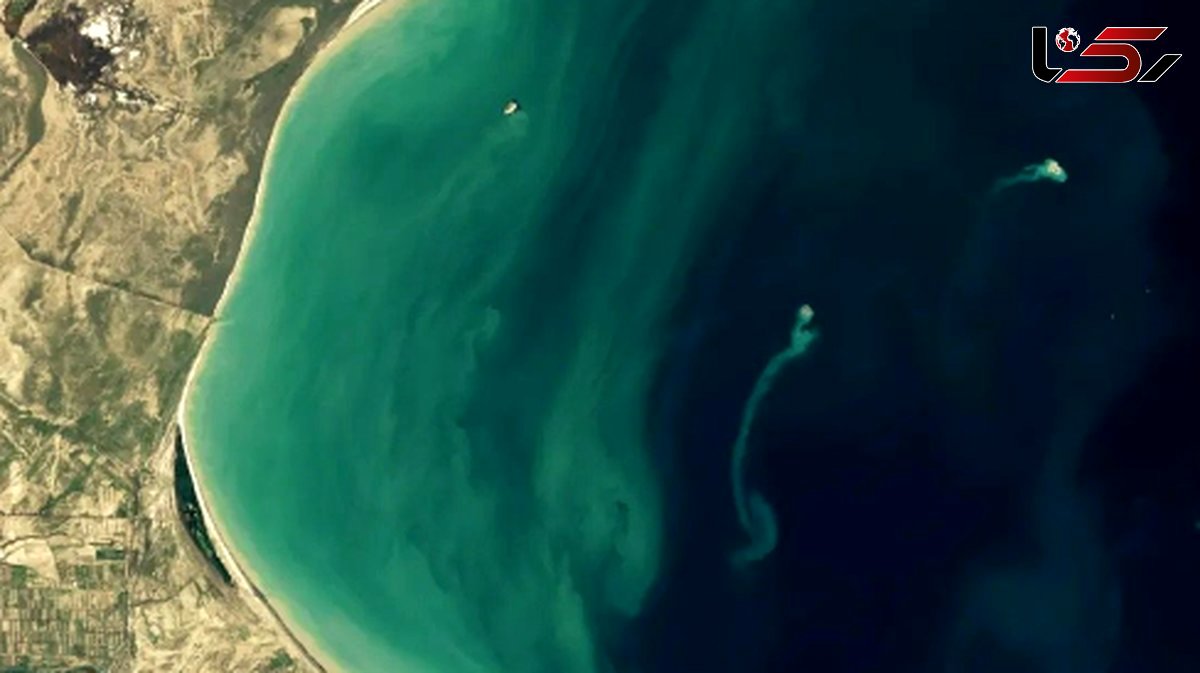Ghost Island Disappears from Caspian Sea – NASA Confirms
Rokna – A mud volcano eruption in the Caspian Sea in January 2023 led to the formation of a temporary island off the coast of Azerbaijan, with a diameter reaching 400 meters. However, this unstable island completely disappeared in less than a year by the end of 2024.

According to Rokna, satellite images captured between 2022 and 2024 reveal a fascinating phenomenon in the Caspian Sea—where a temporary island, formed as a result of a mud volcano eruption, emerged and then vanished from the water’s surface in under a year. It was an island with a very brief lifespan.
This temporary landmass appeared in late January 2023 above the underwater mud volcano "Kumani Bank," located 24 kilometers off the eastern coast of Azerbaijan. Reports indicate that the island developed further by February 4th, reaching a diameter of approximately 400 meters. However, its structure remained highly unstable. The last satellite images, recorded in December 2024, confirmed the island’s complete disappearance.
Repeated Eruptions in the Kumani Bank Region
According to information published by Live Science, the Kumani Bank mud volcano has erupted eight times since its discovery in 1861. Each of these eruptions lasted only a few days, and in nearly all instances, temporary islands appeared on the sea surface. The largest recorded eruption occurred in 1950, resulting in an island with a diameter of 700 meters and a height of 6 meters.
The Nature of Mud Volcanoes
Unlike classical volcanoes, mud volcanoes do not eject lava or ash. Instead, they bring a mixture of hot mud, water, and natural gases to the surface. Although these phenomena are less destructive than traditional volcanoes, they can produce large quantities of pressurized natural gas. The impact of rock particles or hot gases can lead to fiery explosions.
For instance, in 2021, an eruption near the Kumani Bank created a massive column of flames on the surface of the Caspian Sea, which was even captured by satellite imagery. In January 2023, an island formed above the underwater mud volcano near Azerbaijan’s coast, which had nearly disappeared by the end of 2024.
Azerbaijan’s Unique Geology
The Republic of Azerbaijan hosts over 300 mud volcanoes both on land and beneath the seabed, placing the country among regions with the highest density of such phenomena. The region’s tectonic setting—located at the convergence of the Eurasian and Arabian plates—is the primary cause of its high geothermal activity.

Similar Cases Around the World
The formation of temporary islands due to volcanic eruptions is not exclusive to the Caspian Sea. In 2015, the eruption of the underwater Hunga Tonga–Hunga Haʻapai volcano in the South Pacific Ocean led to the creation of an island covering 1.9 square kilometers in Tonga. This island existed until 2022, but following one of the most powerful eruptions, it was completely destroyed. Subsequent studies revealed that the explosion led to the extinction of specific microbial species.
In October 2023, a volcanic eruption near the island of Iwo Jima in Japan also resulted in the formation of a temporary island, which was clearly visible from space. However, by March 2024, satellite images showed that the island was rapidly sinking into the surrounding waters.
Send Comments